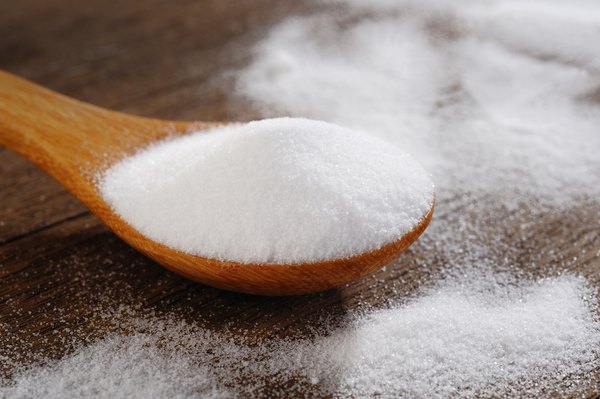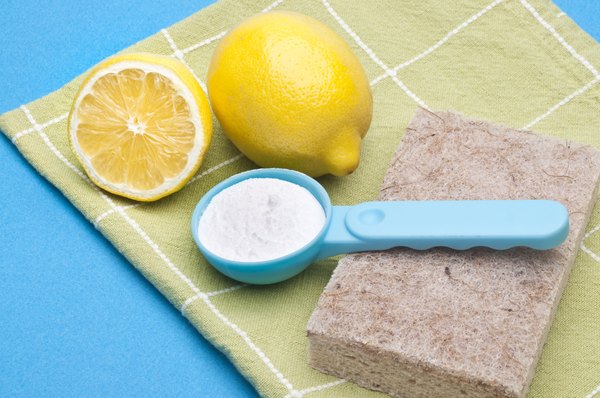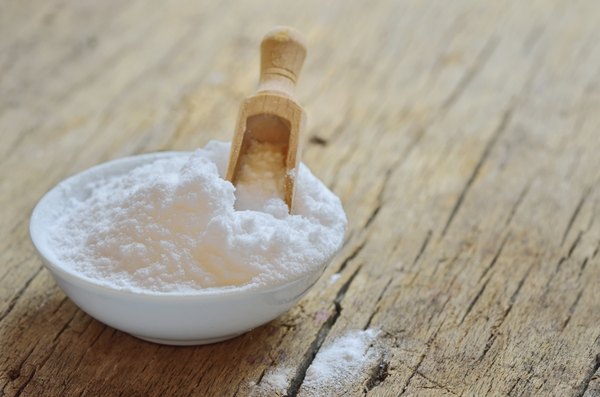
...........................................................................................................................................................
Physical &
Chemical Properties of Sodium Bicarbonate
By A.P. Mentzer
A common staple in many homes and science
classrooms, sodium bicarbonate is more commonly known by the name baking soda.
Like all types of matter, sodium bicarbonate has
definitive physical and chemical properties that can be observed or quantified.
These properties include baking soda's appearance and chemical behavior.
Sodium bicarbonate is odorless.
Molecular Composition
Sodium bicarbonate is a mixture of carbon,
sodium, hydrogen and oxygen. One molecule contains one carbon atom, one sodium
atom, one hydrogen atom and three oxygen atoms for a molecular formula of
NaHCO3 or CHNaO3.
Based on molecular weights, sodium bicarbonate
is composed of 57.1 percent sodium, 27.4 percent oxygen, 14.3 percent carbon
and 1.2 percent hydrogen.
The density of sodium bicarbonate is 2.159 grams
per cubic centimeter.
Physical Properties Observed
The physical properties of a substance are
characteristics of that can be observed without changing the composition or
identity of the substance.
Observations about the appearance of sodium
bicarbonate such as color, odor, taste and state of matter are all physical
properties.
Sodium bicarbonate is a white, crystalline
powder that sometimes forms lumps. It is odorless and has a bitter, salty
taste.
At room temperature, it is a solid. Solubility,
or the ability of a substance to dissolve in water, is also a physical
property.
Sodium bicarbonate is soluble in water and can
be separated from water through evaporation.
It will decompose at temperatures greater than
50 degrees Celsius.
Chemical Properties Ascertained
Chemical properties describe observations of a
substance based on the ability of the substance to change its chemical
composition.
Decomposition and pH are two common chemical
properties of sodium bicarbonate.
The concentration of hydrogen ions (H+) in a
solution is a chemical property referred to as pH. The pH scale ranges from 0
to 14. A pH less than 7 indicates an acid, a value of 7 is neutral and a value
greater than 7 is considered alkaline.
A 1 percent molar solution of baking soda in
water at room temperature has a pH of 8.3. This number indicates that baking
soda is alkaline, which accounts for its bitter taste.
Decomposition is the process using heat to break
down a substance into simpler components that are different from the original
substance.
When heated to a temperature greater than 50 degrees
C (122 degrees F), sodium bicarbonate decomposes, or splits apart to form
mostly carbon dioxide (CO2) and water (H2O) with trace amounts of sodium
carbonate (NaCO3). Decomposition is a chemical change.
Baking soda has many uses.
Sodium Bicarbonate Uses
Some of the physical and chemical properties of
sodium bicarbonate have useful applications.
Baking soda’s alkalinity causes it to react with
acids. This property makes sodium bicarbonate useful for baking, cleaning and
deodorizing.
Many bad odors are caused by acids, and baking
soda neutralizes these odors when it reacts with them.
The gas released during an acid-base reaction
between baking soda and an acid such as cream of tartar, lemon juice or lactic
acid in buttermilk causes baked goods to rise.
The abrasive texture of baking soda crystals is
useful for cleaning dirt and stains from a variety of surfaces, including
teeth.
A.P.
Mentzer graduated from Rutgers
University with degrees in Anthropology and Biological Sciences. She worked as
a researcher and analyst in the biotech industry and a science editor for an
educational publishing company prior to her career as a freelance writer and
editor. Alissa enjoys writing about life science and medical topics, as well as
science activities for children






No comments:
Post a Comment